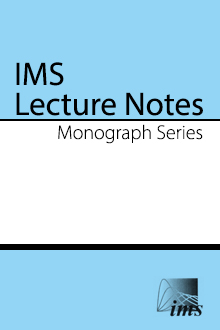Abstract
Design of experiment with related factors can be implemented by using the technique of sliding levels. Taguchi (1987) proposed an analysis strategy by re-centering and re-scaling the slid factors. Hamada and Wu (1995) showed via counter examples that in many cases the interactions cannot be completely eliminated by Taguchi’s strategy. They proposed an alternative method in which the slid factors are modeled by nested effects. In this work we show the inadequacy of both methods when the objective is response prediction. We propose an analysis method based on a response surface model, and demonstrate its superiority for prediction. We also study the relationships between these three modeling strategies.
Information
Digital Object Identifier: 10.1214/074921706000001085


